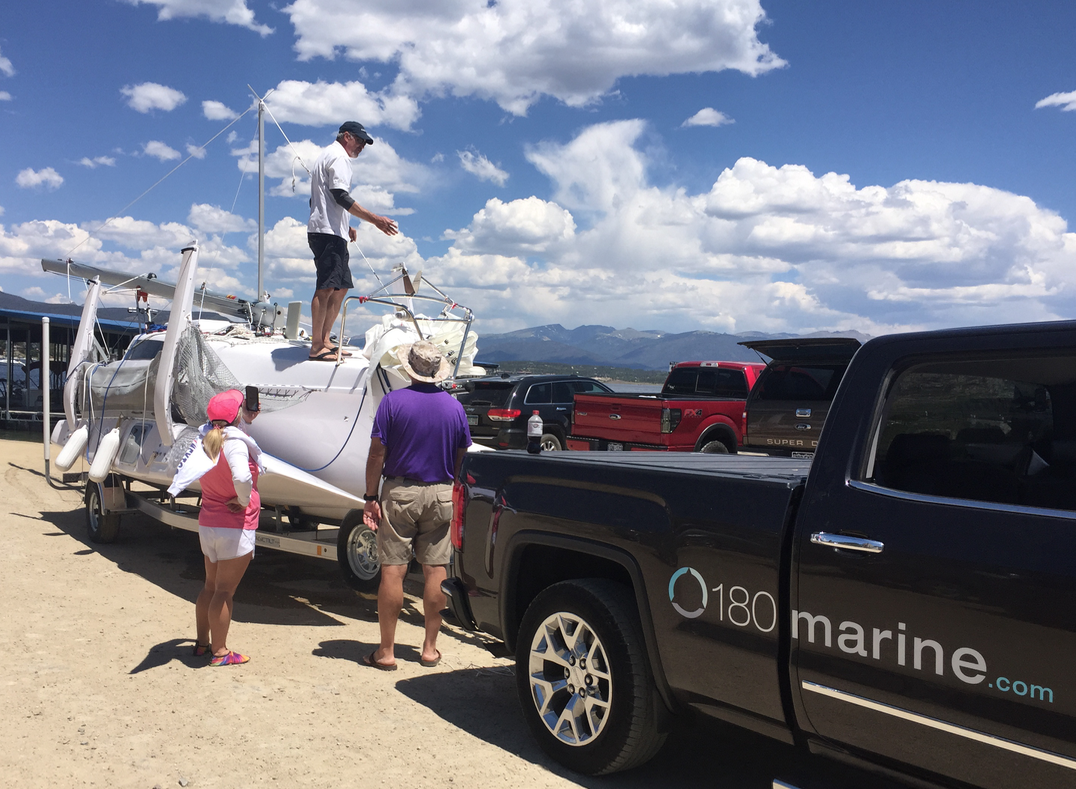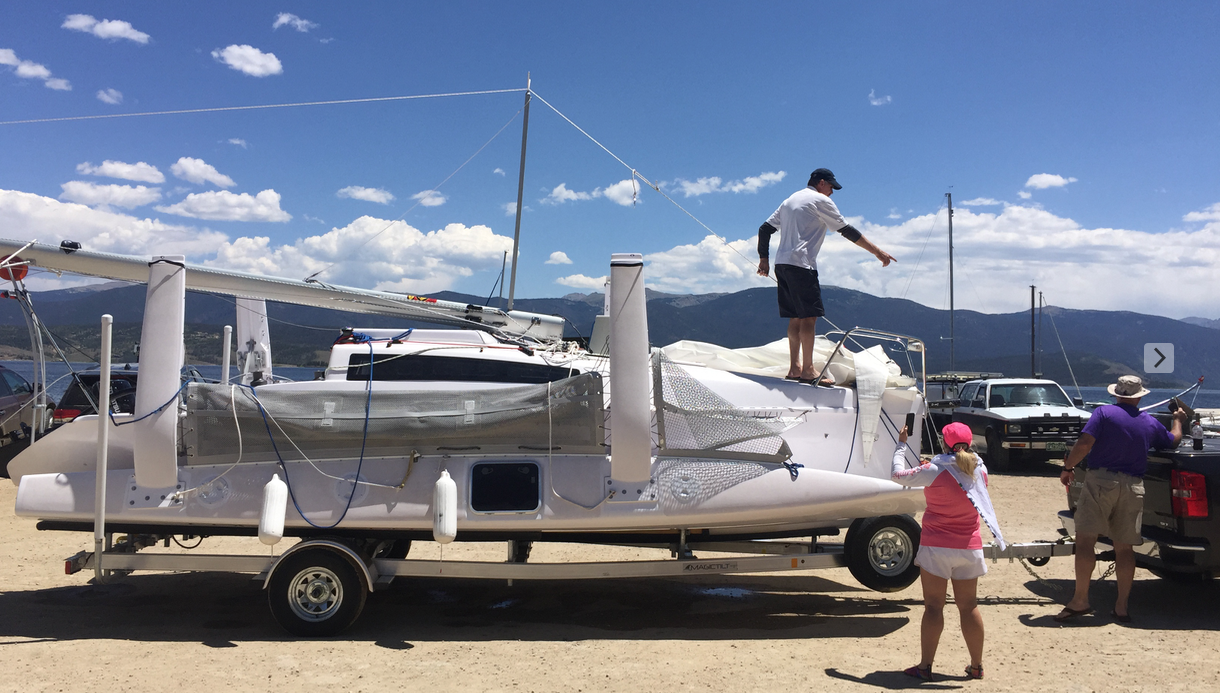
Lowering and raising the mast on a Corsair 760
Monitoring the float shrouds with rotating masts on initial rigging to ensure they do not become too tight or catch on anything during raising.
Winch operator should be careful to ensure that the trailer winch line lies evenly across drum while mast is beginning to be raised. With an offset bow roller, there can be a tendency for incoming line to pile up on one side of the drum to where it can suddenly slip off.
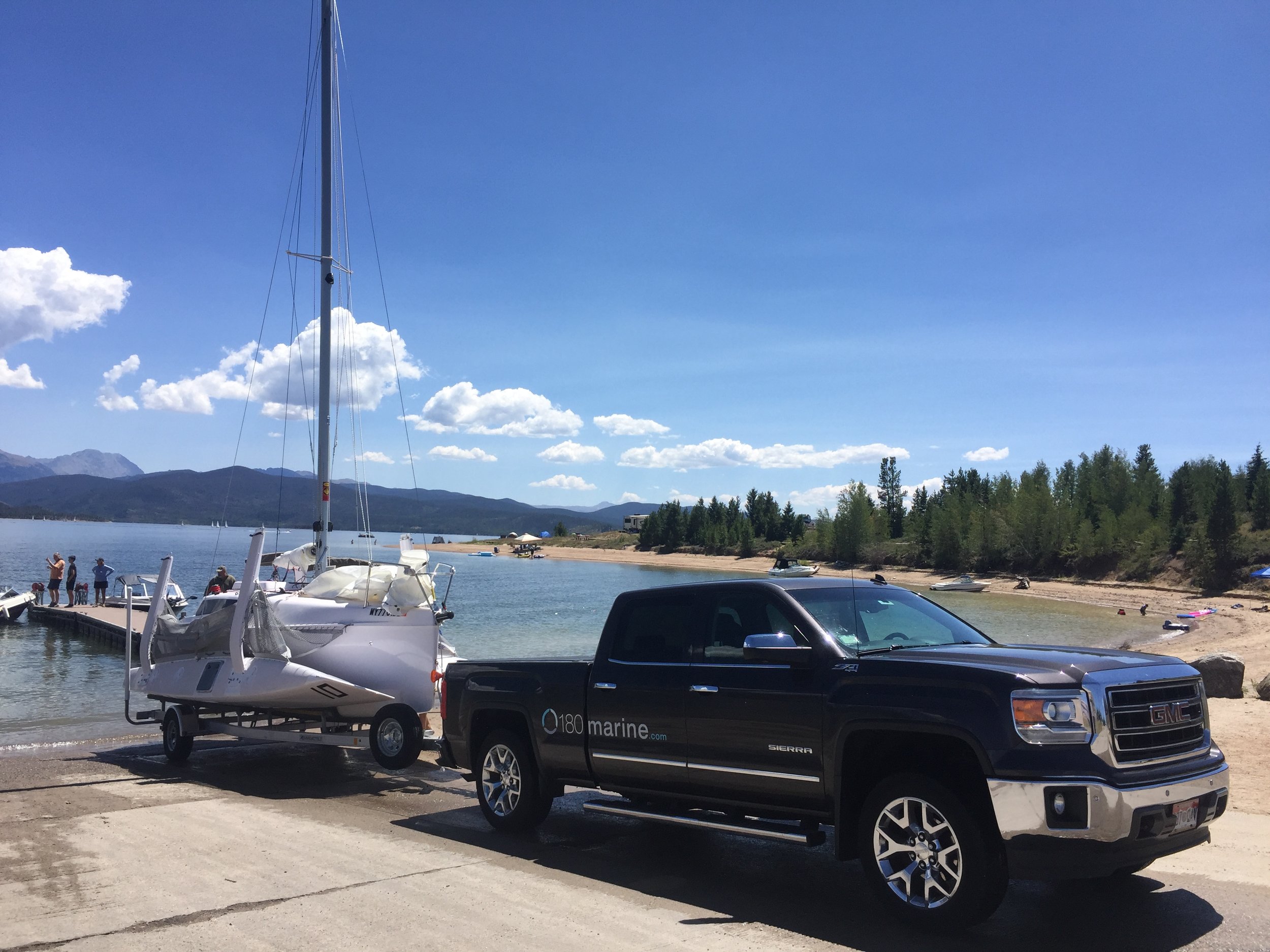
Launching the Corsair 760
Mast raising and launching went without a hitch and within just over an hour we were taking our first sail, allowing the synthetic shrouds to stretch in. The 760 Sport comes standard with synthetic side shrouds and tensioning system from Colligo Marine
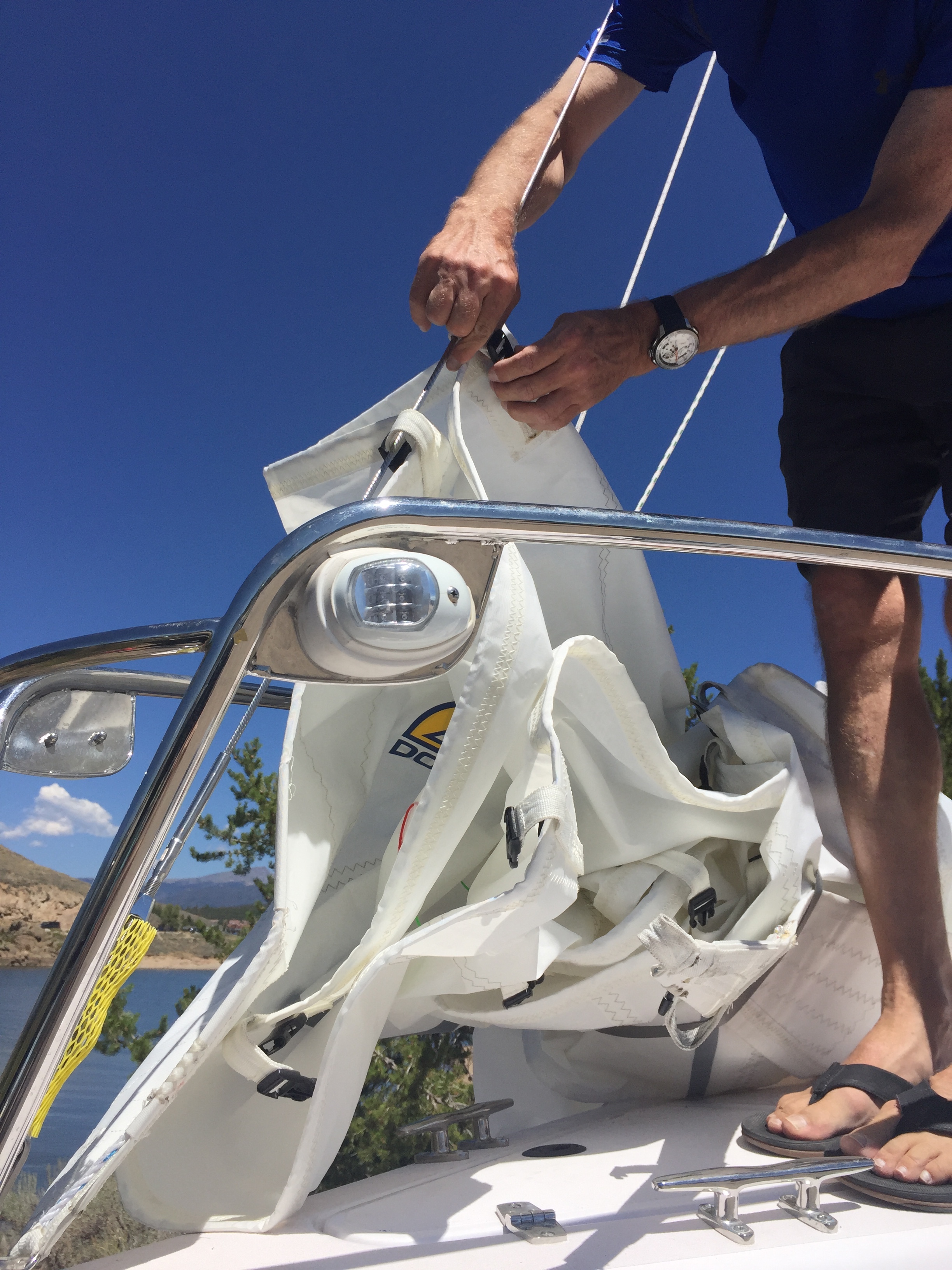
Hank on vs furling
Here are a few pros and cons:
Roller Furling Pros:
Easily deployed
Easily stored
Easily reefed by partially furling sail
Can be managed from cockpit
Roller Furling Cons:
Mechanical parts that can fail
Hard to furl in strong wind
Poor lead in angle due to furling extrusion
Sail makes headstay bulky when furled
Weight aloft
Hard to change headsails
Hard to inspect headstay
Hank On Pros:
Less mechanical parts
Easy to lower sail in strong wind (simply release the halyard)
Ideal sail shape (this is why race boats have hank on headsails)
Minimal windage when sail is lowered
Sail can be removed for strong storms to further reduce windage
Minimal weight aloft
Easy to change headsails
Hank On Cons:
Sail must be flaked and stowed when lowered
Limited number of reefs available to be put in
Not as easy or quick to deploy
You have to go forward to tend to the sail
Cruising
You need to evaluate what you are looking for and what compromises you are willing to accept. As you can see, the both have pluses and minuses, it's just a matter of finding which you can live with.
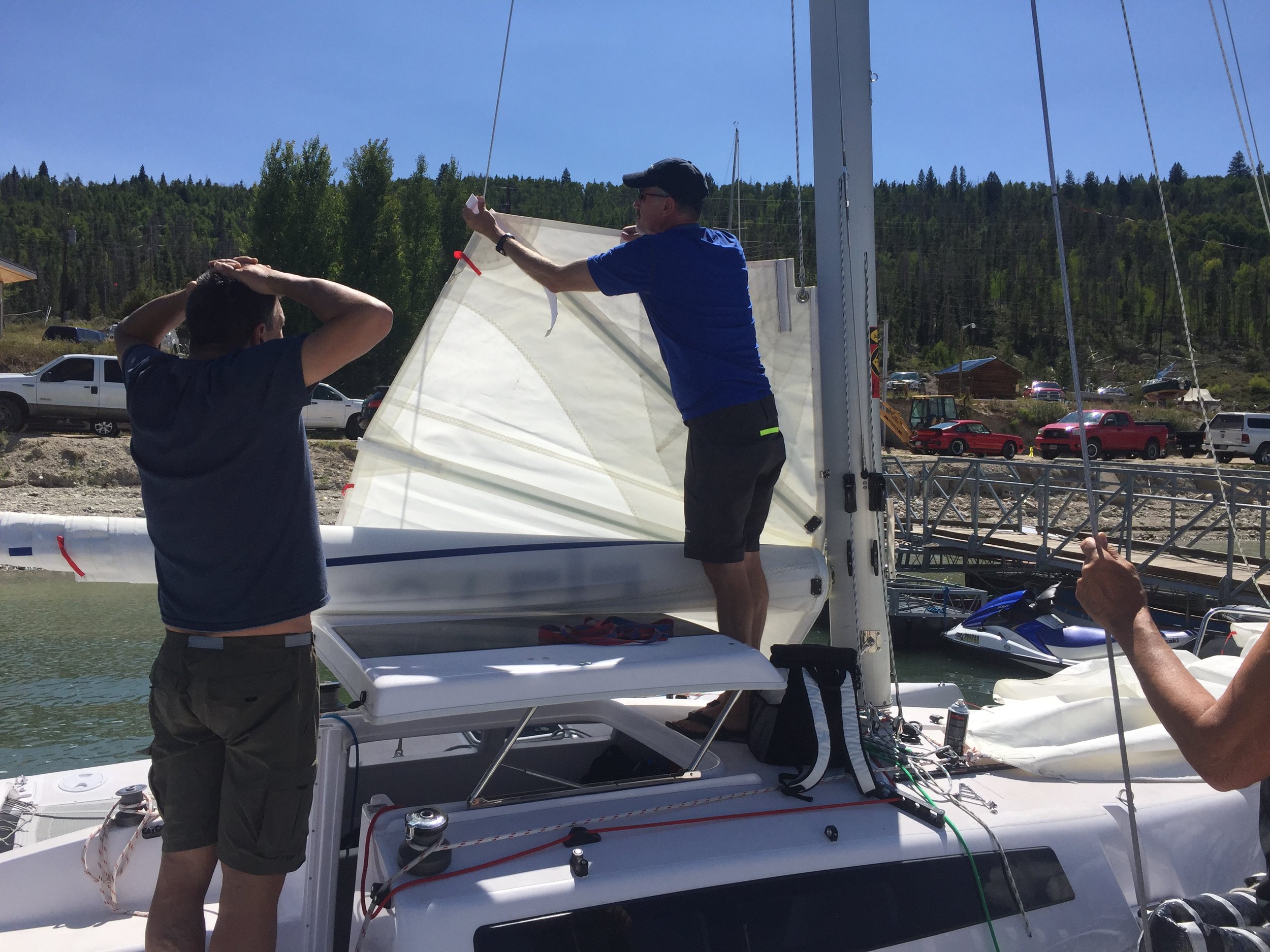
Getting the mainsail ready
The mainsail is usually hoisted first. Turn directly into the wind and commence pulling on the halyard. You may find winching necessary to get the main fully up and if fitted, use the jib halyard winch. If the boom roller furling system is fitted, the main will automatically unroll from the boom.
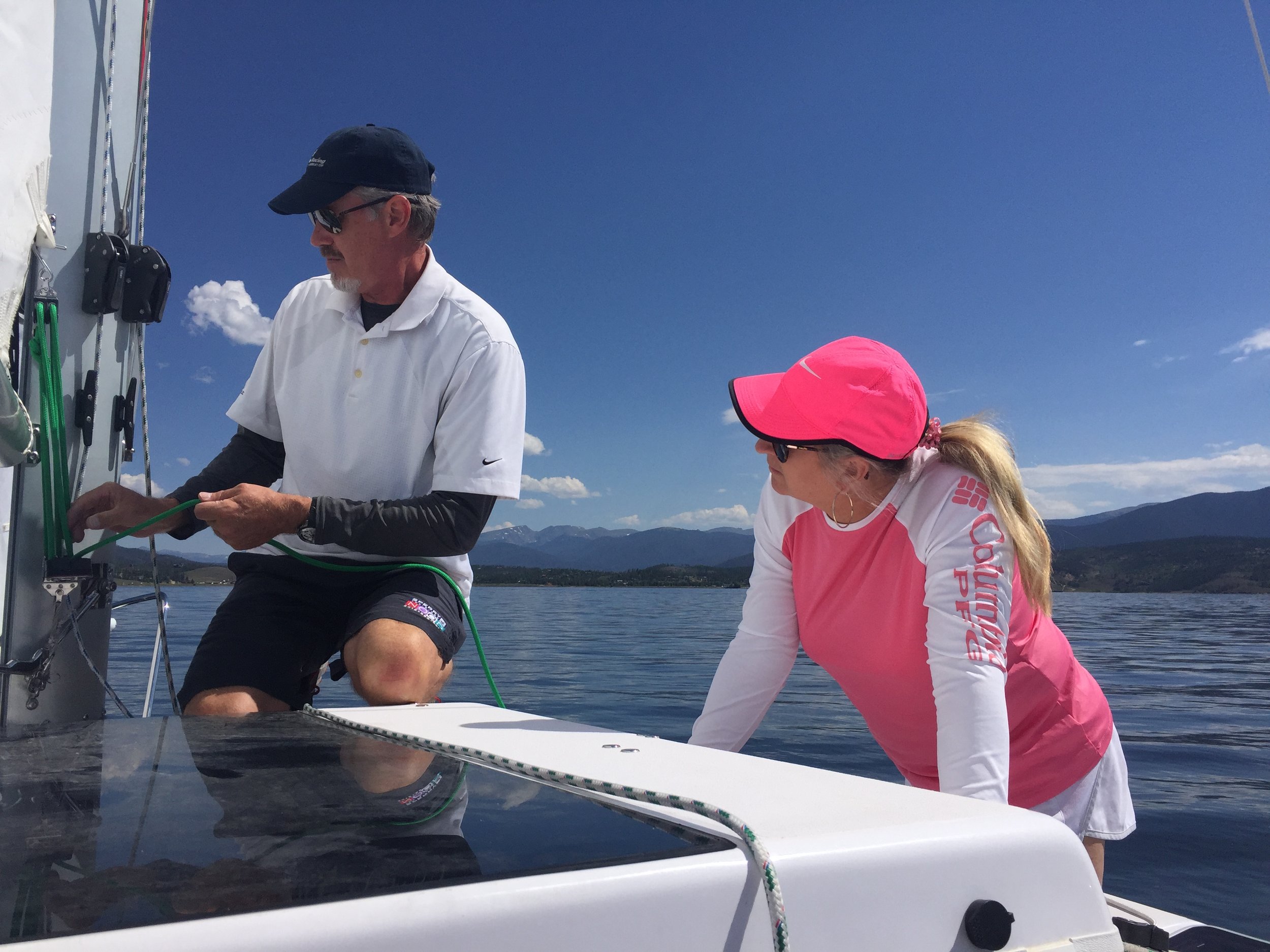
Halyard lines on the Corsair 760
Checking to see if all the halyard lines run from the mast through the turning blocks back to the correct rope clutches on the aft end of the cabin roof.
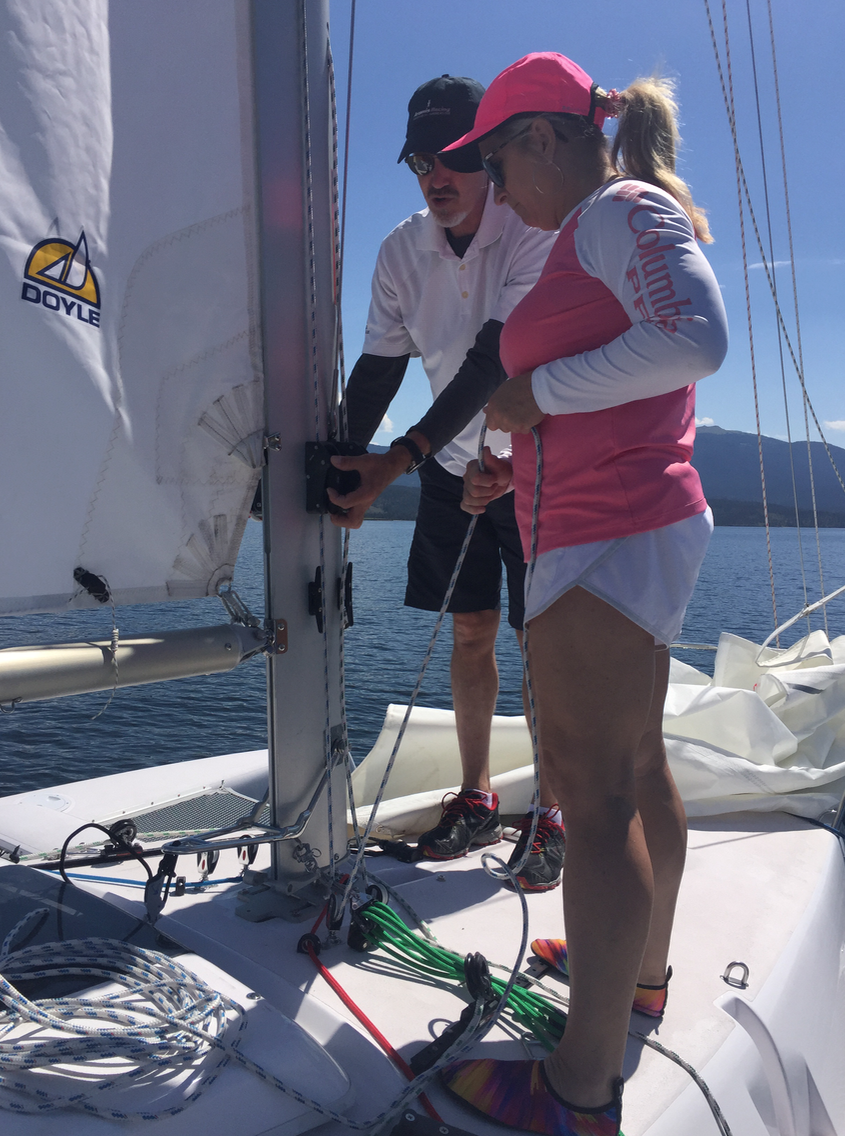
Raising the mainsail
Because the bow must point directly or nearly into the wind to ease tension on the mainsail as it rises, the sailboat usually motors off the dock and into the wind in preparation for raising the main. At anchor or on a mooring, unless there is a strong counter-current, the bow will naturally face into the wind.
After ensuring the shackle is tight and the halyard clear to run up, loosen the mainsheet slightly while the boat maintains its orientation into the wind. Then start raising the main by hand.
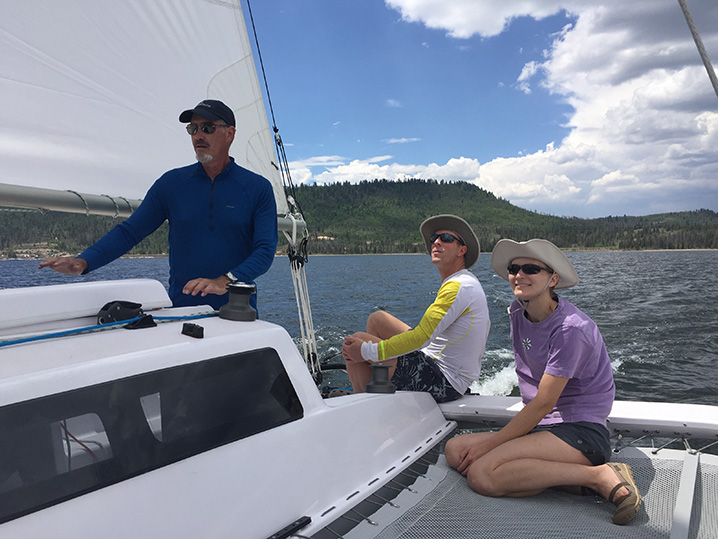
Sailing safe with peace of mind...
Reduce sail early as follows:
a. Genoa/screacher should be replaced by jib with wind speeds greater than 12 knots.
b. Main should be reefed to first set of reef points when wind reaches 20 knots.
c. Main should be further reefed to second reef points when wind reaches 25 knots.
d. In winds over 35 knots main should be roller reefed to 4th batten from the top and jib replaced by storm jib.
e. With 50+ knots the main should be furled more, or completely, leaving only the storm jib.
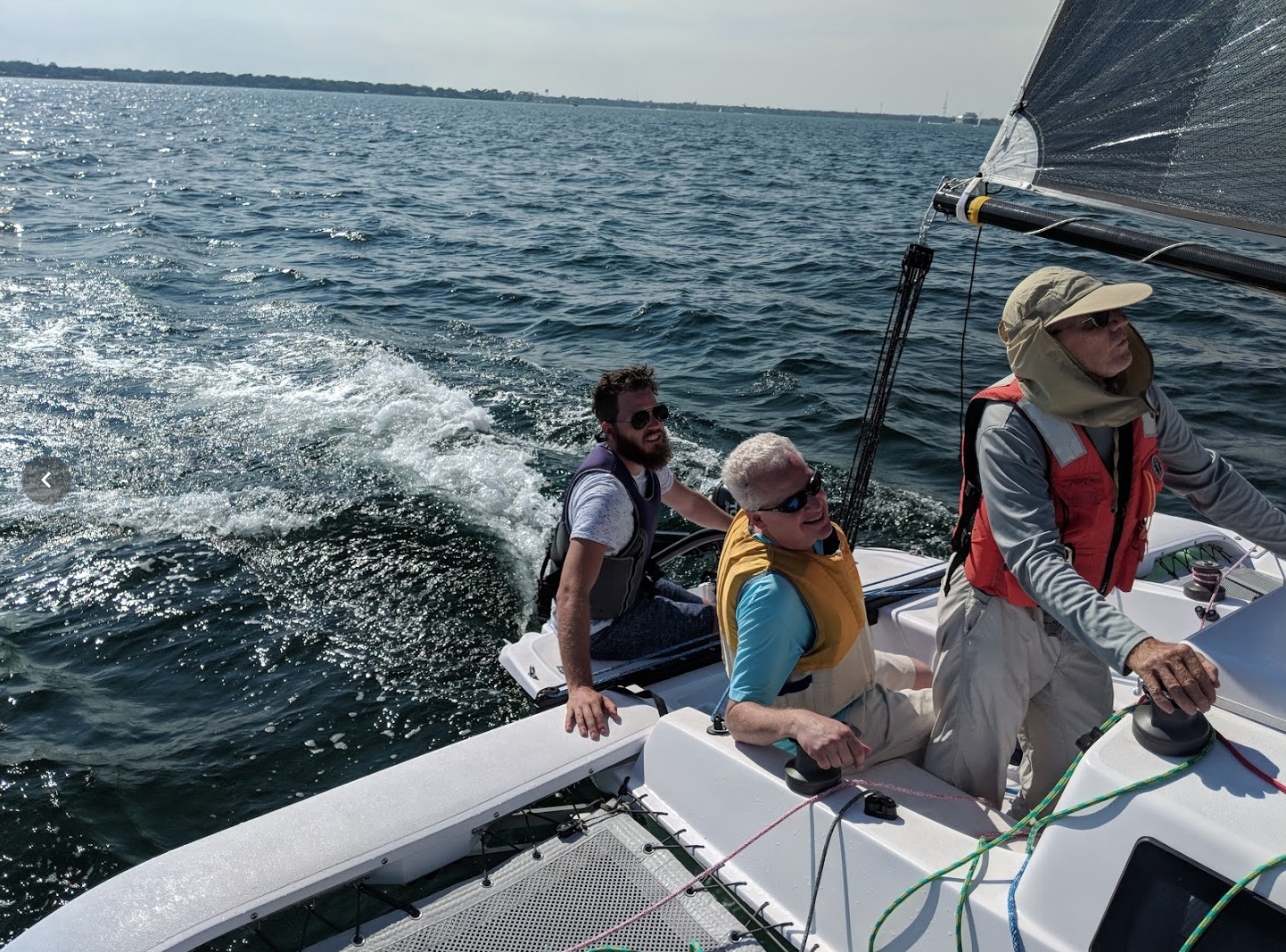
Sailing tips on the Corsair 760
Pointing ability is excellent but care must be taken not to over sheet or try to point too high. Just a few less pointing, with sheets slackened slightly, can see boat speed jump from 6 or 7 knots to 9 or 10 knots.
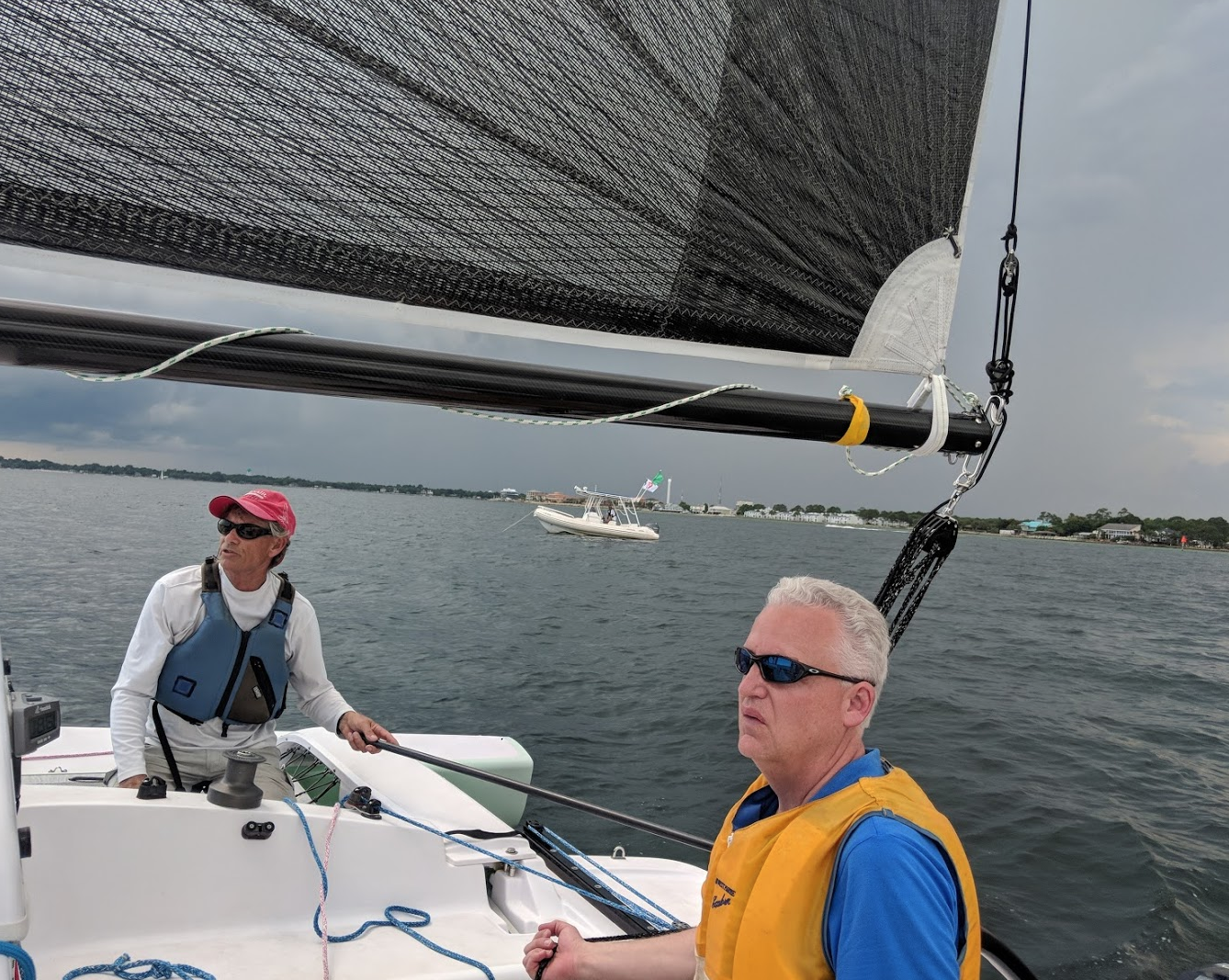
Easy sailing on the Corsair 760
Corsair trimarans are sailed like any other yacht, the most notable differences being the response, lightness of the helm and the low angle of heel. This ranges from an average of 5° to 10° to a maximum of about 15°.
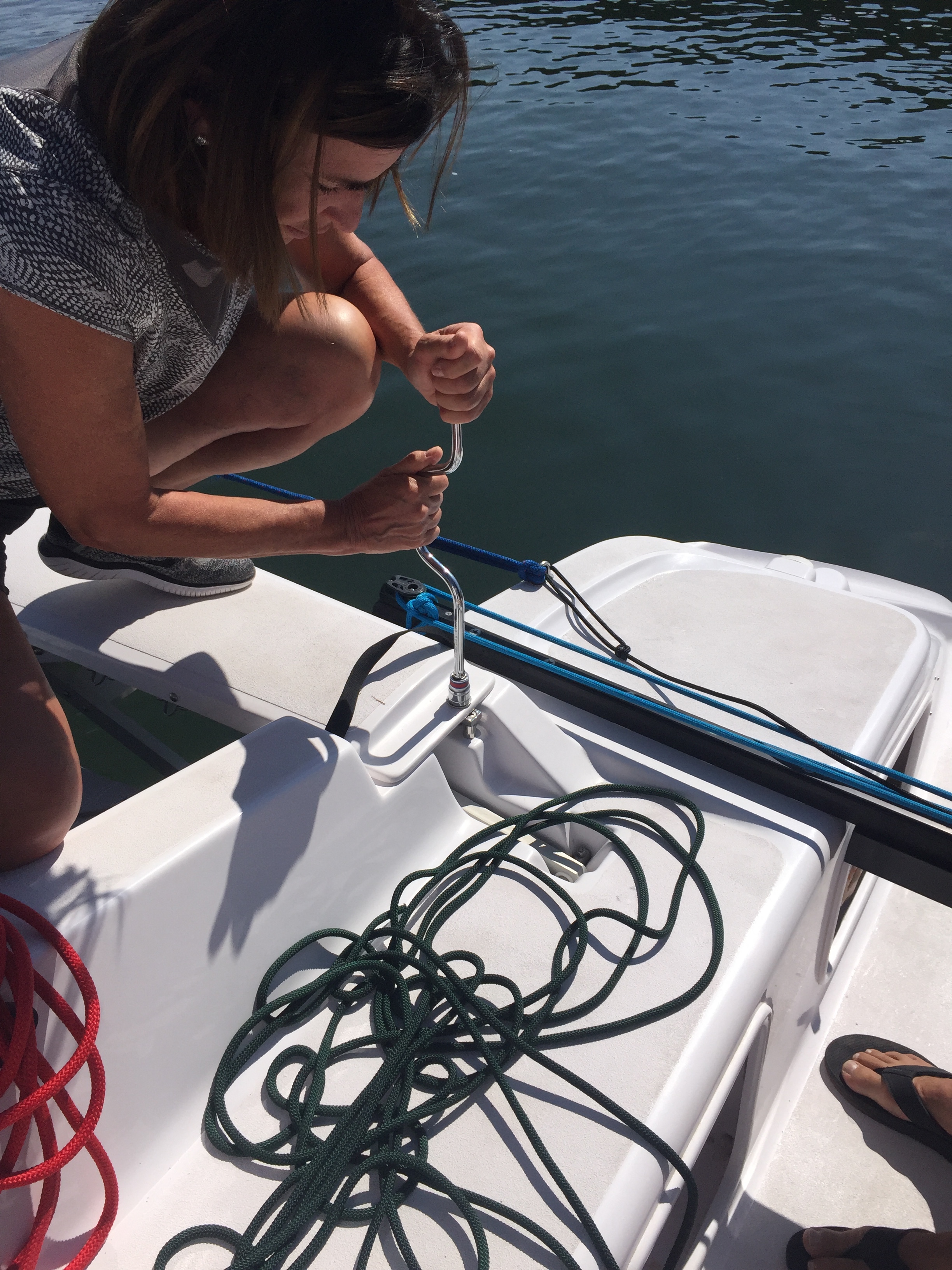
Beam bolts on the Corsair 760
Remember these beam bolts should always be in place and tightened before going sailing. Otherwise the upper folding struts can again be overloaded as above due to the beam inner end being forced up slightly by sailing loads.
